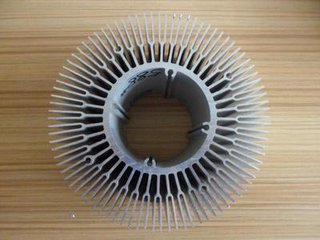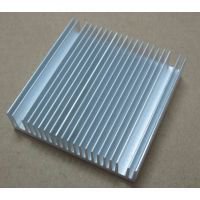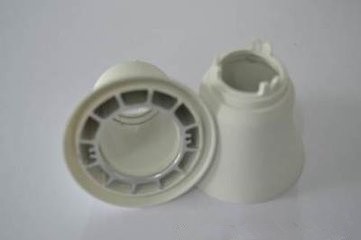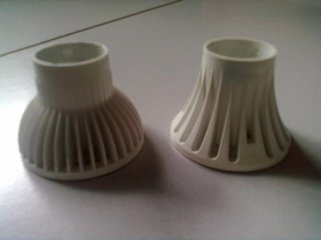At present, one of the most significant technical challenges facing LED lighting fixtures is the issue of heat dissipation. Both the heat generated by LEDs and the electrolytic capacitors pose short-term obstacles to the development of LED lighting solutions and are key factors contributing to the early degradation of LED light sources.
For LED lamps to function optimally, it's crucial to dissipate heat as quickly as possible. By reducing the internal cavity temperature, we can ensure that the power supply operates under more stable conditions, thereby preventing the premature aging of the LED light source caused by prolonged exposure to high temperatures.
Unlike traditional light sources, LED lights do not emit infrared or ultraviolet rays, meaning they lack any inherent radiation-based cooling mechanisms. As such, the heat dissipation in LED lighting fixtures relies entirely on heat sinks that are tightly coupled with the LED chips. An effective heat sink must possess the ability to conduct, convect, and radiate heat efficiently.
In terms of radiator functionality, the primary task is to swiftly transfer heat from the source to the surface of the radiator. After this, the critical role of the heat sink is to facilitate the dissipation of heat into the surrounding air through convection and radiation. While thermal conduction serves to establish the path for heat transfer, thermal convection is the dominant mechanism for heat dissipation. The performance of a heat sink largely depends on its surface area, geometric design, and the strength of natural convection. Generally speaking, if the distance between the heat source and the heat sink surface is less than 5mm, a material with a thermal conductivity greater than 5 will suffice for transferring heat, with the remainder depending on convection.
Most LED lighting still employs low-voltage (VF=3.2V), high-current (IF=200-700mA) LED chips. Given their high operational heat output, aluminum alloys with high thermal conductivity are typically used. These include die-cast aluminum radiators, extruded aluminum radiators, and stamped aluminum radiators. A die-cast aluminum radiator is manufactured using a pressure casting technique where molten zinc-copper-aluminum alloy is poured into a die-casting machine and then cast into a pre-designed mold to form the desired shape.
Below is a comparative analysis of the five types of radiators:
**Die-Cast Aluminum Radiator**

The production cost is relatively controllable, but the heat dissipation fins cannot be made too thin, making it challenging to maximize the heat dissipation area. Common die-cast materials include ADC10 and ADC12.
**Extruded Aluminum Radiator**

Liquid aluminum is extruded through a fixed mold and then machined into the desired heat sink shape. This method has a higher processing cost. The extruded aluminum heat sink allows for thinner fins, maximizing the heat dissipation area. During operation, natural air convection enhances the heat dissipation effect. Common materials used are AL6061 and AL6063.
**Stamped Aluminum Radiator**

Stamping and drawing processes use steel and aluminum alloy sheets that are punched and drawn into cup-shaped radiators. The inner and outer surfaces of these stamped heat sinks are smooth, with limited heat dissipation area due to the absence of fins. Common materials include 5052, 6061, and 6063 aluminum alloys. Stamping offers lightweight solutions with high material utilization rates, making it a cost-effective option.
Heat conduction in aluminum alloy heat sinks is excellent and suits isolated switching constant current power supplies. For non-isolated switching constant current power supplies, structural design is necessary to separate AC and DC, high and low voltage power supplies, to meet CE or UL certification standards.
**Plastic-Aluminum Radiator**

This type of radiator features a conductive plastic outer shell with an aluminum core. The conductive plastic and aluminum core are formed together on an injection molding machine, requiring pre-machining of the aluminum core. Heat from the LED chip is quickly transferred to the conductive plastic via the aluminum core, and the conductive plastic uses its multi-wings to form air convection heat dissipation and surface radiation.
The plastic-coated aluminum heat sink typically uses the original white and black colors of the conductive plastic. Black plastic-coated aluminum heat sinks offer better radiant heat dissipation. Conductive plastic is a thermoplastic material that is easy to injection mold, offering good resistance to thermal shock cycles and excellent insulation properties. Conductive plastics have better emissivity than ordinary metallic materials. The density of conductive plastic is 40% lower than that of die-cast aluminum and ceramics. For the same shape, the weight of a plastic-coated aluminum heat sink can be reduced by nearly a third compared to an all-aluminum heat sink. Additionally, the processing cost is lower, the processing cycle is shorter, and the processing temperature is lower. The finished product is less prone to breaking, and customers can use their own injection molding machines to design differentiated shapes. Plastic-coated aluminum radiators also have good insulation properties, making them easier to pass safety regulations.
**High Thermal Conductivity Plastic Radiator**

High thermal conductivity plastic radiators have developed rapidly in recent years. These radiators are entirely plastic-based, with thermal conductivity several times higher than regular plastic, reaching up to 2-9 W/mK. They offer excellent heat conduction and radiation capabilities and can be applied to various power lamps. This material is suitable for LED lamps ranging from 1W to 200W.
High thermal conductivity plastic can withstand voltages up to 6000V AC, making it ideal for non-isolated switching constant current power supplies and HVLED high voltage linear constant current power supplies. LED lighting fixtures using this type of radiator are easier to pass stringent safety inspections such as CE, TUV, and UL. HVLEDs operate at high voltages (VF=35-280VDC) and low currents (IF=20-60mA), reducing heat generation. High thermal conductivity plastic radiators can be produced using traditional injection molding and extrusion equipment. The finished product has a high finish, improving production efficiency and offering high design flexibility. These radiators are made from PLA (corn starch) polymerization, are fully degradable, leave no residue, and produce no chemical pollution or heavy metal contamination during production, aligning with global environmental protection standards.
High thermal conductivity plastic radiators contain densely packed nano-scale metal ions inside the PLA that move at high temperatures, increasing heat radiation energy. Their vitality surpasses that of metal materials. With high-temperature resistance, these radiators do not break or deform at 150°C for five hours. They can be used with high-voltage linear constant current IC drive schemes without electrolytic capacitors or large inductors, significantly improving LED lamp lifespan. Non-isolated power solutions offer high efficiency and low costs, making them particularly suitable for fluorescent tube and high-power mining lamp applications.
High thermal conductivity plastic radiators can be designed with numerous precise cooling fins, allowing fins to be made very thin and maximizing the heat dissipation area. During operation, air convection naturally forms, enhancing heat dissipation. The heat from LED chips is quickly transferred to the highly thermally conductive plastic, dissipating heat rapidly through air convection and surface radiation.
High thermal conductivity plastic radiators are lighter than aluminum. Aluminum has a density of 2700kg/m³, whereas plastic has a density of 1420kg/m³, which is nearly half that of aluminum. Therefore, the same shape of a heat sink weighs only half as much as an aluminum one. Moreover, the processing is simpler, shortening the molding cycle by 20-50%, reducing production costs.
Shenzhen Ousida Technology Co., Ltd , https://www.osdvape.com